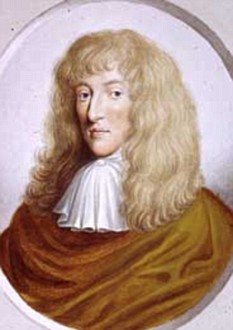Welcome to the blog where you will find musings from around the vineyard and winery. News from the founder Andrew Hodson, a glimpse from the cellar and more.
ANDREW'S NEWSLETTER
VINIFICATION
EVENTS AT VERITAS
Browse by Category
Experience Veritas
Weddings at Veritas
Shop Wines
How the English Helped the French Make Champagne
December 8, 2021

Revisiting the Sparkling Wine Saga
As we all know, only sparkling wine that comes from the Champagne region of France is called “Champagne”. The rest of the world is stuck with using “sparkling wine” to describe their bubbly. And to their credit the “Champenois” have done a fantastic job branding Champagne. In so doing, they have elevated the style of wine at the same time as protecting the growers and the producers of this glorified commodity.
You may be surprised to know the fascinating role the British played in the evolution of this quintessential French luxury. The French would have you believe that the father of Champagne was Dom Perignon, but even before the record of his works were published, one Christopher Merrett wrote a paper to the London Royal Society in 1662.
His paper, “Some Observations on the Ordering of Wine,” was the first to describe how adding sugar to an already-made wine created a second fermentation. In a sealed container, that second fermentation made the wine ”lively.” This was the method that the French adopted, initially calling it the “Methode Champenoise” that they later trademarked. As a result, the rest of the world has to use the term Traditional Method.


It’s all in the bottle (or rather, the glass)
At the same time of this novel production method, the British fortuitously were able to develop glass manufacturing methods that enabled them to make much higher quality glass bottles. These bottles could withstand the pressure generated by the yeast in the second fermentation; French glass bottles that were inherently weaker merely exploded!
There we have it – two fundamental steps in Britain, one by Christopher Merret and the other by British glass makers enabled the French to succeed in making Champagne exclusive to France.
From Sparkling Wine to the Traditional Method of Champagne Production
All thanks to Veuve Clicquot
While the British made significant steps that aided in the success of Champagne, we must acknowledge the unmistakable contributions of the French. The oldest record of sparkling wine is from Benedictine monks near Carcassonne in 1531 with their Blanquette de Limoux. The “méthode ancestral” captured bubbles by bottling the wine before the initial fermentation had ended. This method leaves yeasts in the bottles making the wine cloudy and oftentimes bitter. The story of how those yeasts are removed before the wine is consumed is quite fascinating, but for another time!
The Pioneering Woman of Wine
A key figure (perhaps the key figure) in the story of champagne is Veuve Clicquot, or Widow Clicquot. She inherited and expanded her Champagne business following the death of her husband. Born Barbe-Nicole Ponsardin, she was a great innovator and is credited with being the first to brand her sparkling wine business with the instantly recognizable yellow-gold Clicquot label.
She popularized the concept of a “vintage” Champagne year as well as the creation of a Rosé champagne. The pink color is achieved by simply adding red wine to the Champagne cuvee.

Her biggest contribution, however, was the process we now call riddling or “remuage.” The bottles rest neck down, or sur point, and yeast collects at the bottom of the bottle neck, encouraged by a gradual rotation of the bottles by a quarter turn each day. Once the yeast has settled, the winemaker removes the bottle cap, expels the yeast plug, and tops up the bottle with the small volume of wine lost. This expulsion process is called disgorging or disgorgement.
Disgorging was further refined in 1884 with what was called “dégorgement à la glace”, in which the neck of the bottle is dipped in freezing glycol. This allows the yeast plug to be ejected more efficiently resulting in less wine loss.
It is no wonder she is now known as the Grand Dame of Champagne!
From Champagne to the Virginia Sparkling Company
One of the reasons I am telling you the background story is because what Veuve Clicquot pioneered in the 17th century is still in use and is driving the success of Virginia Sparkling Company, established in 2019.
Led by our very own Elliott Watkins, another stalwart Englishman, VSC provides the expensive specialty equipment and expertise to Virginia wineries to produce their own sparkling wines. Manual riddling racks have been replaced with automatically controlled gyro palettes and dégorgement à la glace allows Elliott, our sparkling wine cellarmaster, to disgorge over 1000 bottles of sparkling wine an hour.

Celebrate the Holidays with Veritas Sparkling Wines

This holiday season, we are re-releasing a limited quantity of our full portfolio of sparkling wines – Veritas Scintilla Vintage 2015, Veritas Scintilla NV, and Veritas Sparkling Rosé. The Vintage Scintilla is a brut sparkling wine showcasing a rich golden color with a brilliant reflection and small, elegant bubbles. The aroma is soft, with lemon zest, candied pear, and freshly baked brioche. Tiny bubbles spiral constantly creating a soft creamy mousse creating an exceptionally long finish.
The beautifully pink Sparkling Rosé (formerly known as Mousseux) is made from a blend of 75% Chardonnay grapes and 25% Cabernet Franc. The grapes were harvested slightly earlier to preserve a clean, acidic character. Take in the sky pink color, like a pink sunset that speaks of warmth and love, while savoring rich aromas of red fruits. These aromas are set off by fresh citrus zest mingled with notes of freshly baked bread and marzipan.
Purchase your holiday sparkling trio today
Until next time – keep sparkling!
Andrew Hodson, Raconteur and Dilettante Ret’d.